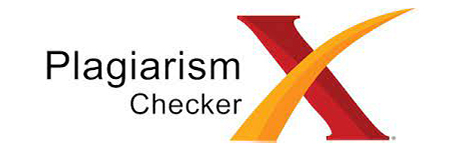Strategi Komunikasi dan Keterlibatan Masyarakat dalam Konservasi Mangrove di Jerowaru, Lombok Timur
DOI:
https://doi.org/10.70716/jocdem.v1i3.184Keywords:
Mangrove, Community Participation, Conservation, Communication, Coastal EnvironmentAbstract
The mangrove ecosystem plays a vital role in maintaining coastal environmental balance, serving as a natural barrier against abrasion and as a breeding ground for various marine species. However, in many areas—including Jerowaru Village in East Lombok—mangrove degradation occurs due to environmentally harmful human activities and a lack of public awareness regarding the importance of this ecosystem. This study aims to analyze the environmental communication strategies implemented and the extent of community involvement in mangrove conservation efforts in the region. The research employed a qualitative approach, using data collection techniques such as in-depth interviews, field observations, and document studies. The findings indicate that participatory communication involving community leaders, youth groups, and local institutions is more effective in raising awareness and fostering collective action than top-down approaches. The use of traditional media and community discussion forums also plays a significant role in disseminating information and building long-term commitment to conservation. Active community participation not only accelerates the mangrove rehabilitation process but also strengthens a sense of ownership and collective responsibility toward the environment. Thus, participation-based communication strategies are key to ensuring the sustainability of mangrove conservation programs in Jerowaru Village. These findings offer recommendations for policymakers and environmental practitioners to prioritize collaborative approaches in similar coastal programs elsewhere.
Downloads
References
Badan Nasional Penanggulangan Bencana (BNPB). (2014). Panduan Pengelolaan Ekosistem Mangrove untuk Mitigasi Bencana. Jakarta: BNPB.
Beierle, T. C., & Cayford, J. (2002). Democracy in Practice: Public Participation in Environmental Decisions. Washington, D.C.: Resources for the Future.
Finke, D., & Young, R. (2018). Ecology of Mangrove Ecosystems. Springer Nature.
Gifford, R. (2013). Environmental Psychology: Principles and Practice. 5th Edition. Vancouver: Optimus Press.
Gupta, H., & Pande, R. (2017). “The Role of Community Participation in Mangrove Conservation: A Case Study of Indian Coastal Regions.” Journal of Environmental Management, 212, 303-315.
Haughton, G., & Hunter, C. (2004). Sustainable Urban Development: Volume 1: Theory. New York: Routledge.
Kemenko Maritim. (2020). Rencana Aksi Nasional Mangrove 2020-2024. Jakarta: Kementerian Koordinator Bidang Kemaritiman dan Investasi Republik Indonesia.
Kusumastuti, D., & Ginting, S. (2015). "Communities' Role in Mangrove Conservation: A Case Study in Coastal Villages of Java." Environmental Science & Policy, 55, 20-30.
MacGregor, S. (2009). The Politics of Sustainability: Environmental Communication in Practice. Oxford: Oxford University Press.
Naylor, R., & Finlay, S. (2018). Strategies for Successful Community-Based Coastal Conservation. Cambridge: Cambridge University Press.
Pomeroy, R., & Douvere, F. (2008). “The Engagement of Stakeholders in Integrated Coastal and Ocean Management.” Journal of Environmental Management, 88(1), 49-58.
Røpke, I. (2004). "The Role of Knowledge in the Transition to Sustainable Consumption." Environmental Politics, 13(2), 319-335.
Sekaran, U., & Bougie, R. (2016). Research Methods for Business: A Skill-Building Approach. 7th Edition. New York: Wiley.
Sheppard, S., & R. Parks. (2006). "Communicating Environmental Issues: A Study of Community-Based Communication in Mangrove Restoration." Journal of Environmental Communication, 6(3), 65-78.
Wahyudi, D., & Suryadi, F. (2019). "Mangrove Restoration: A Community-Based Approach to Environmental Conservation." Journal of Coastal Conservation, 23, 22-33.
Downloads
Published
How to Cite
Issue
Section
License
Copyright (c) 2025 Arif Hidayat

This work is licensed under a Creative Commons Attribution-ShareAlike 4.0 International License.











